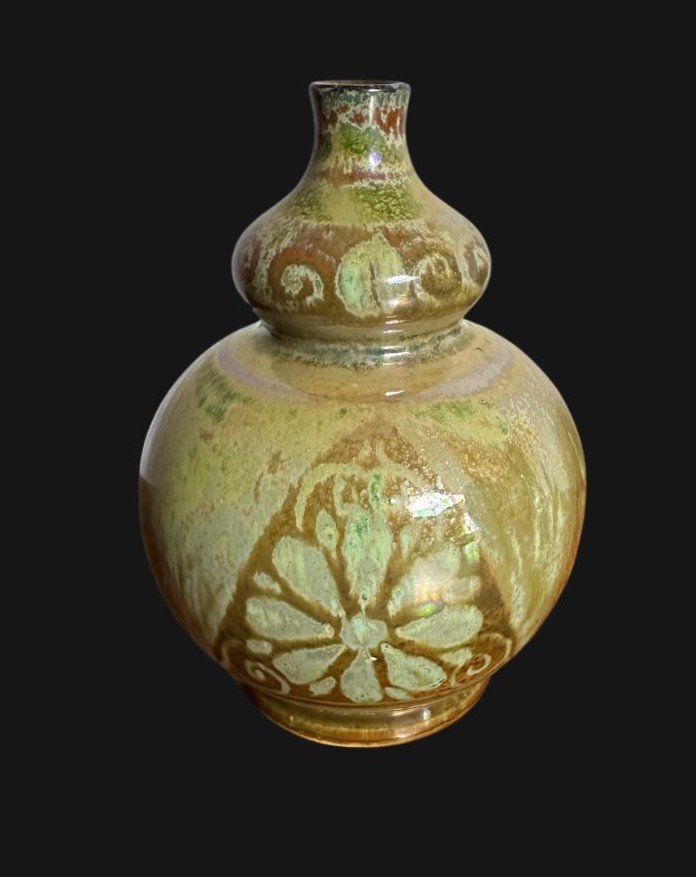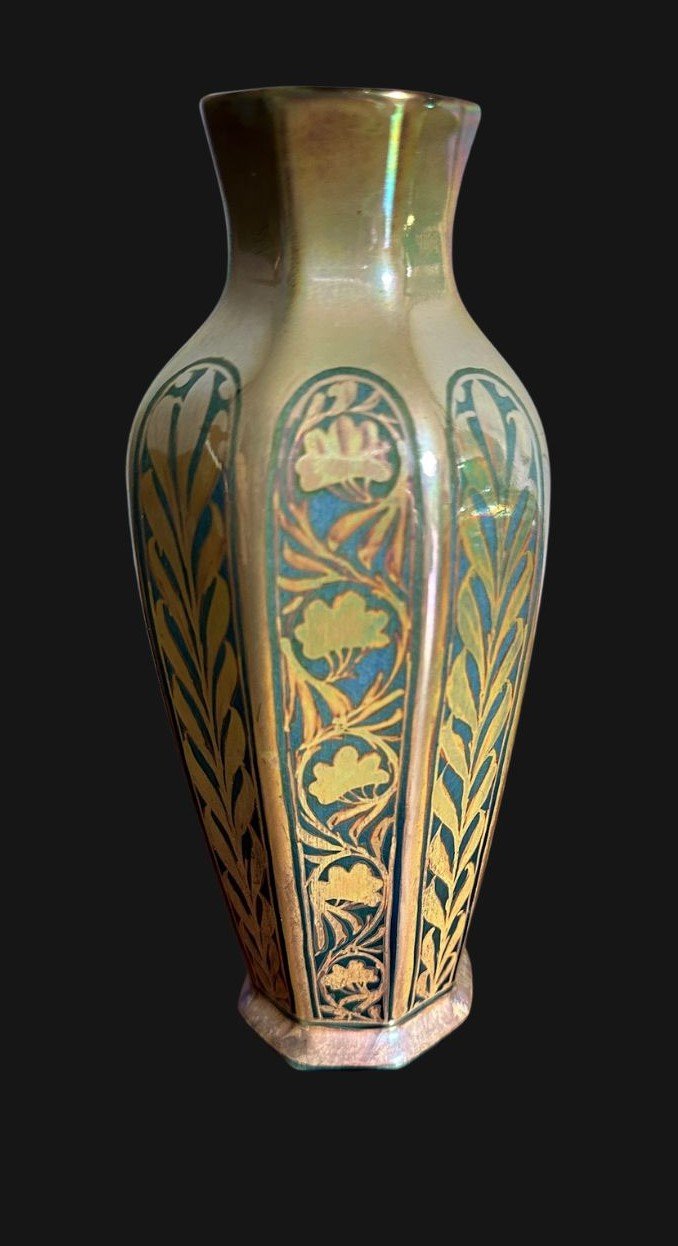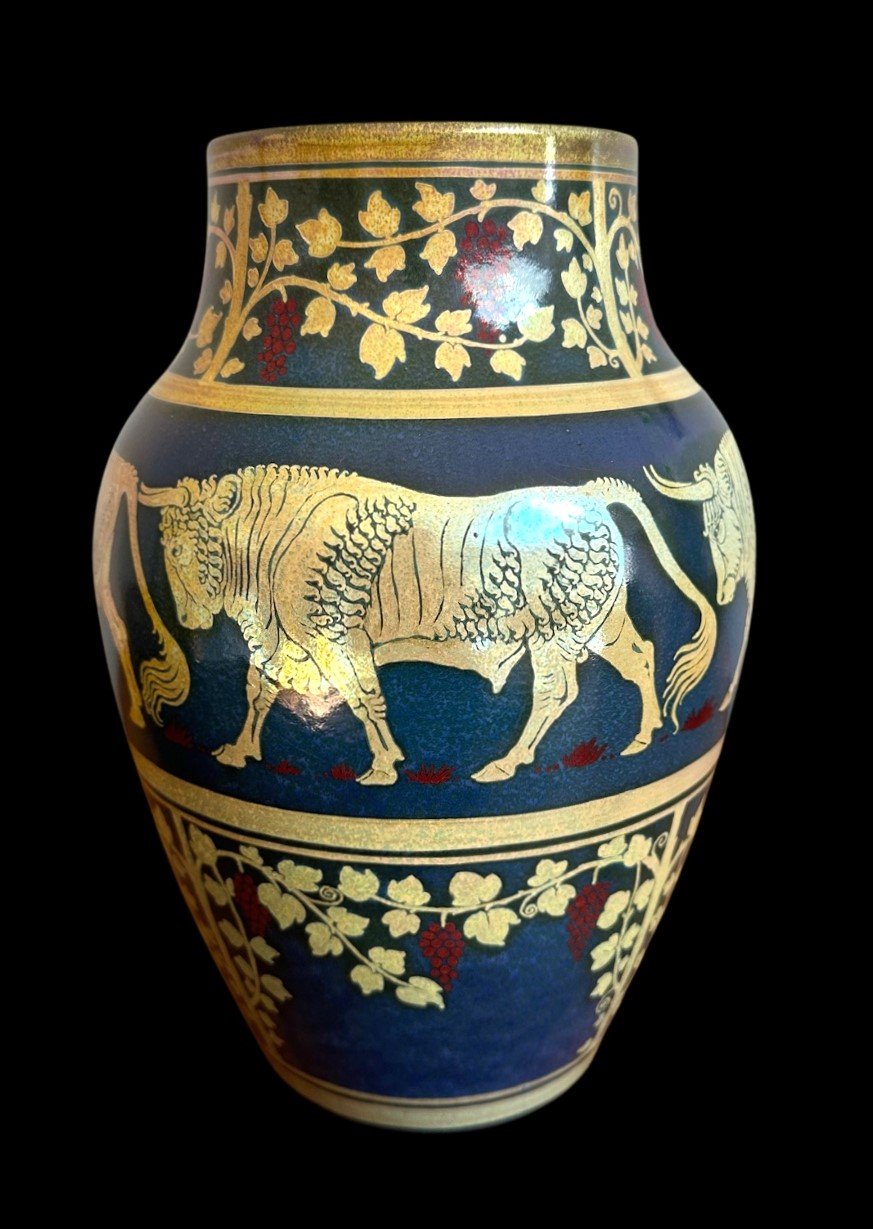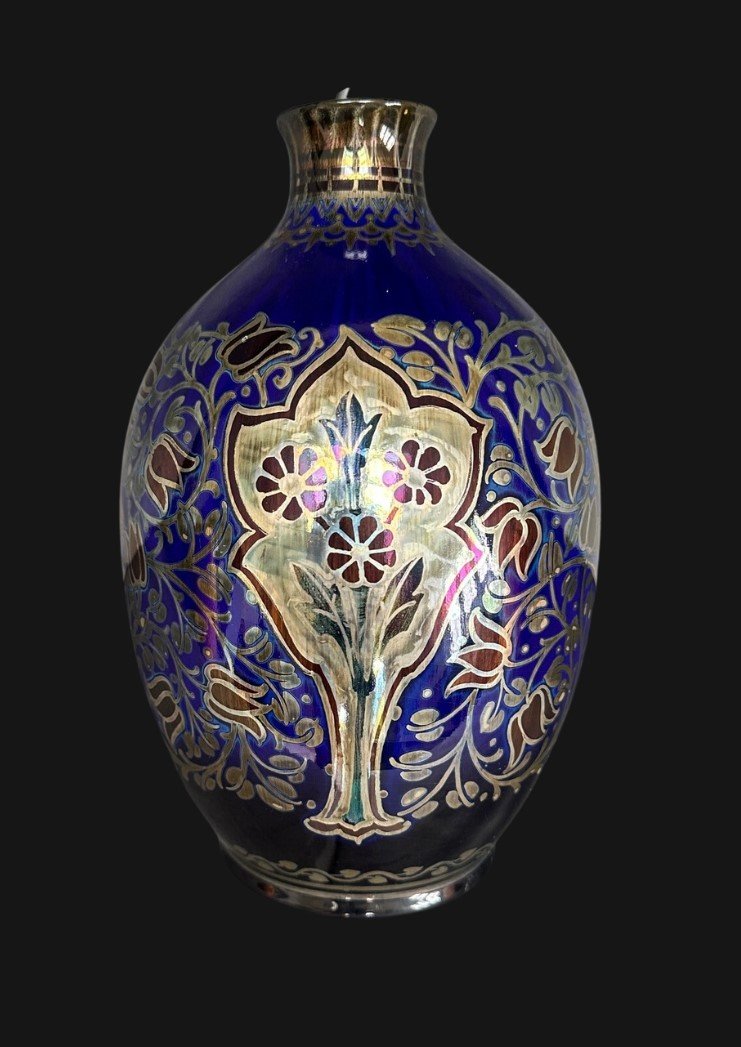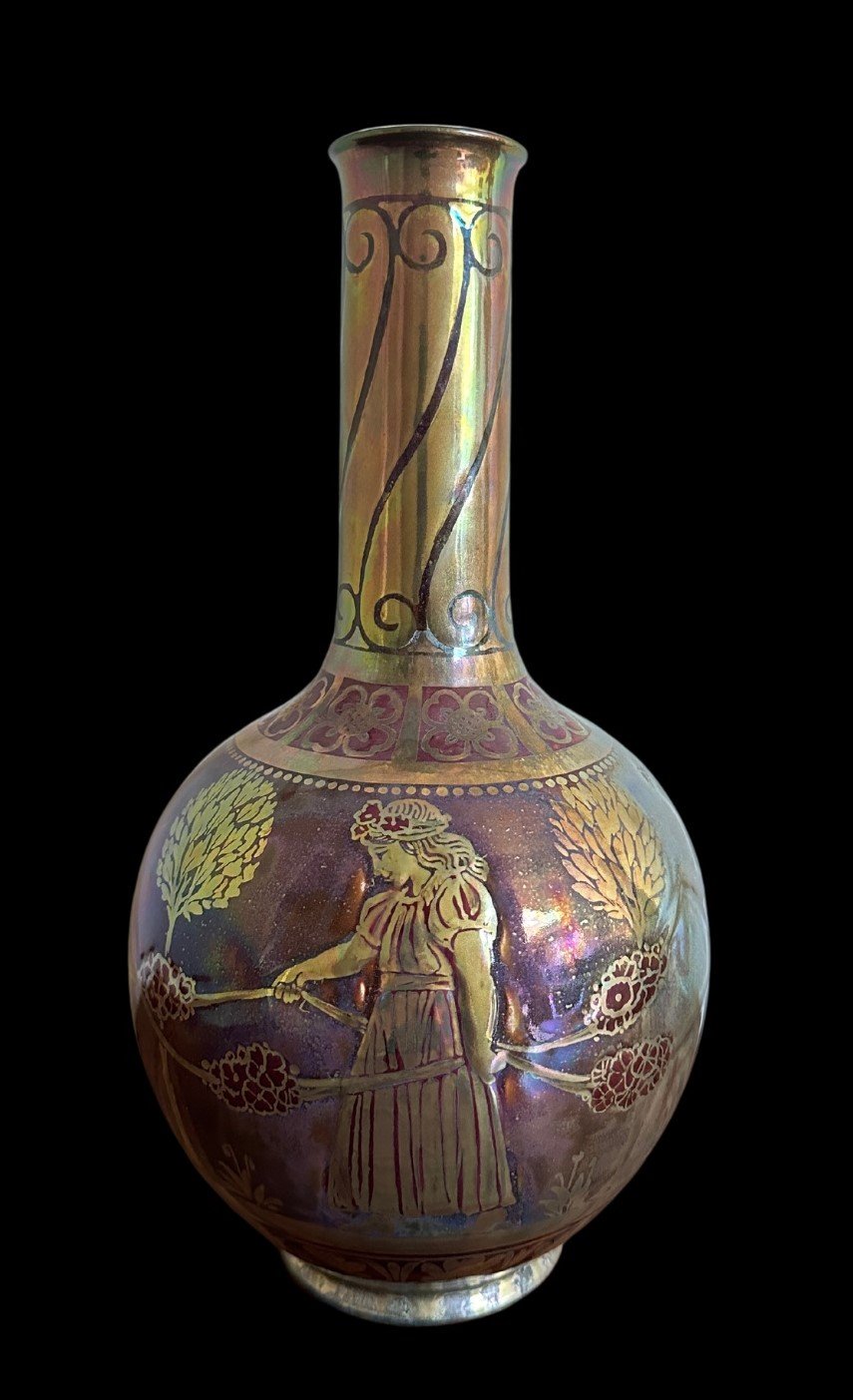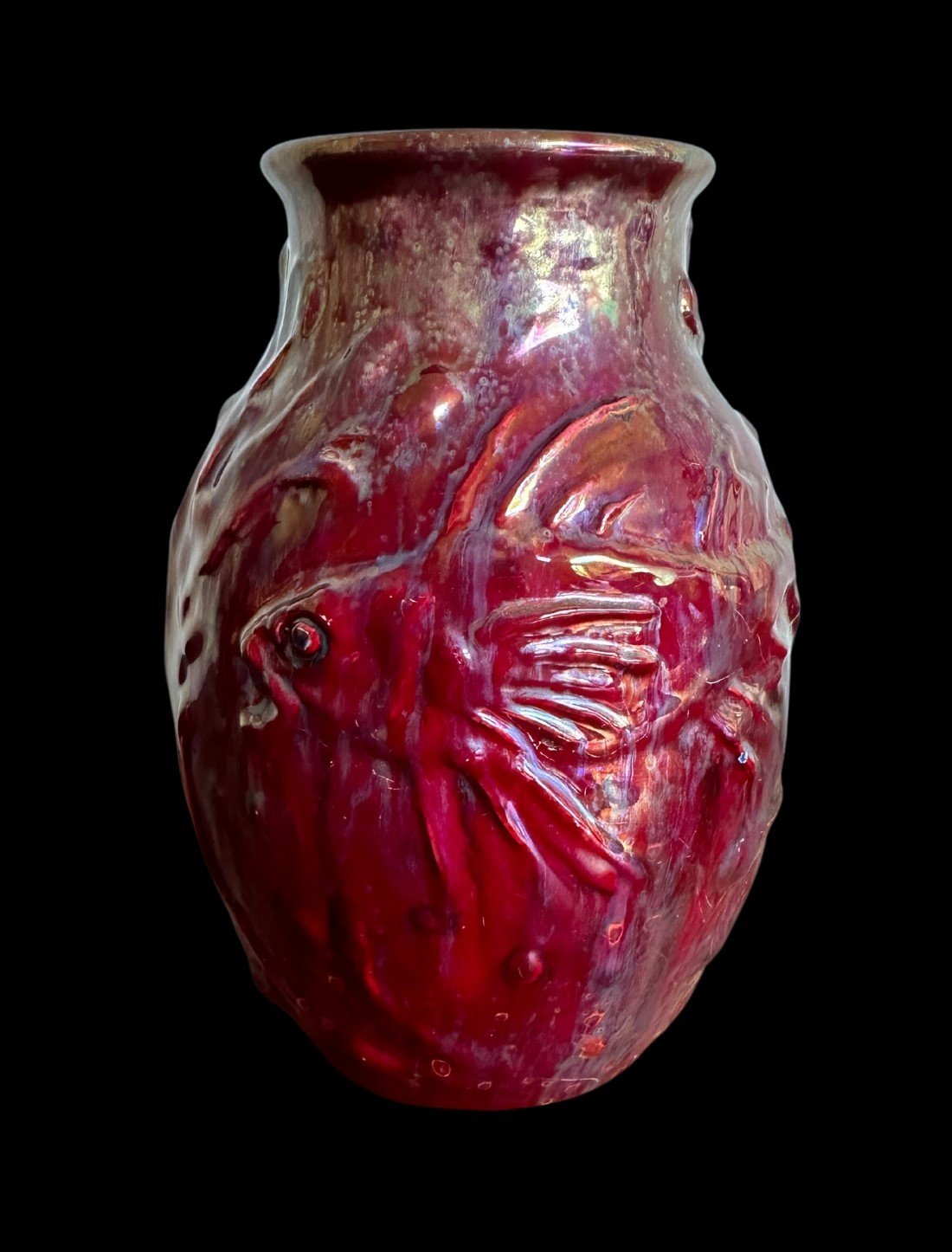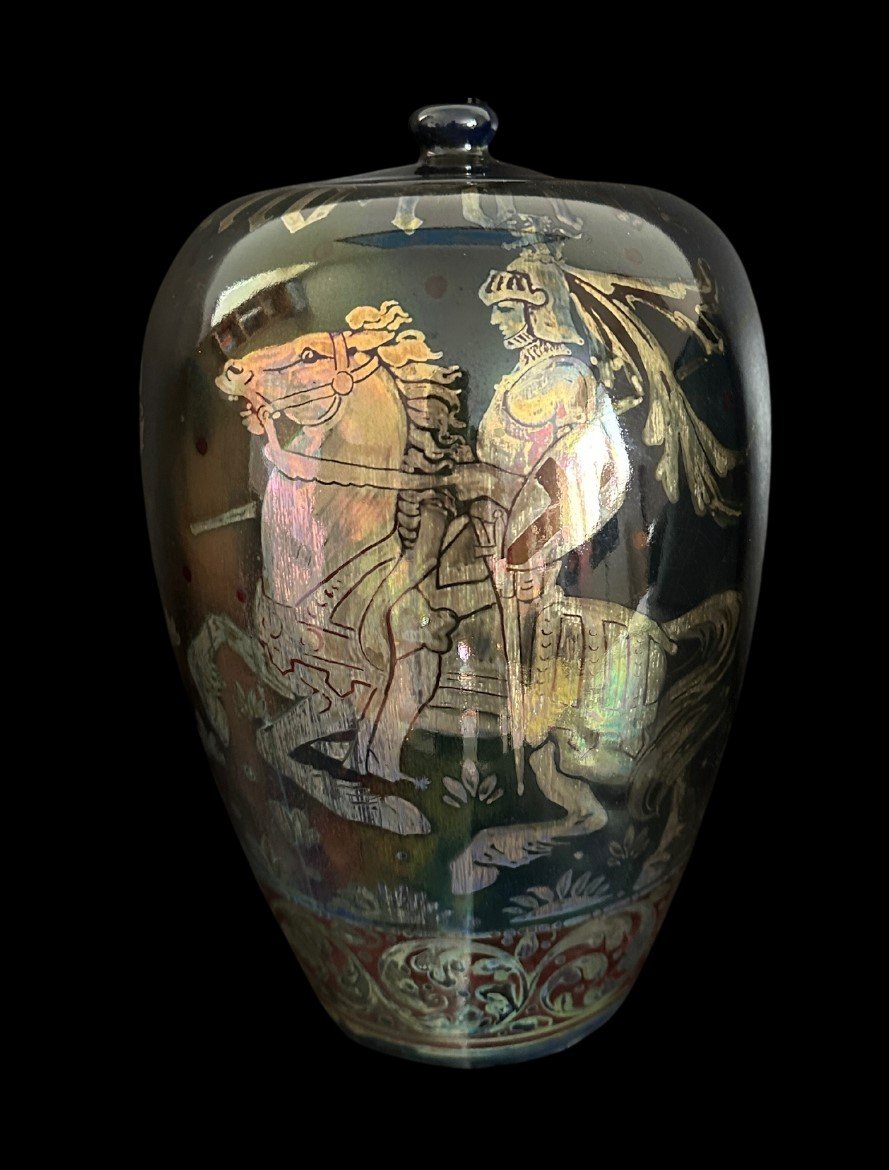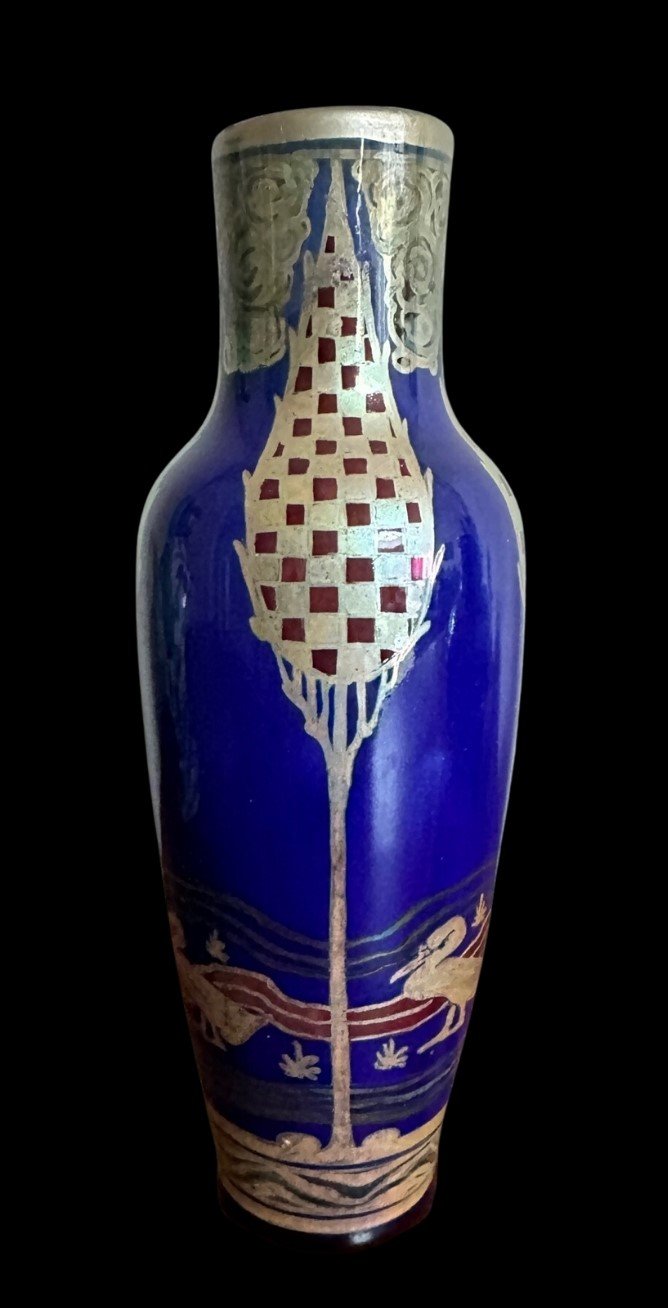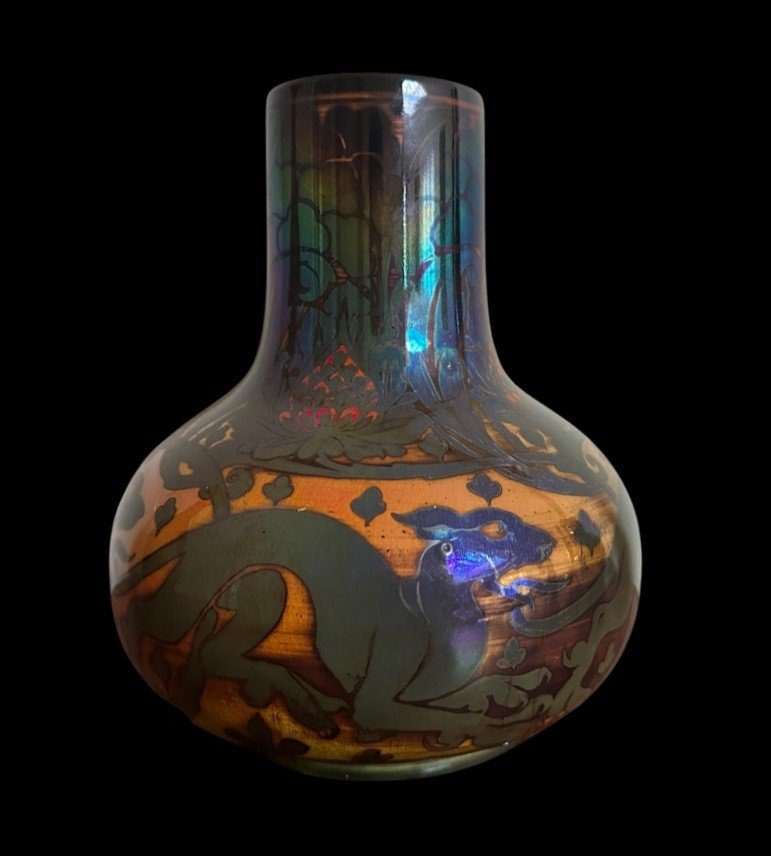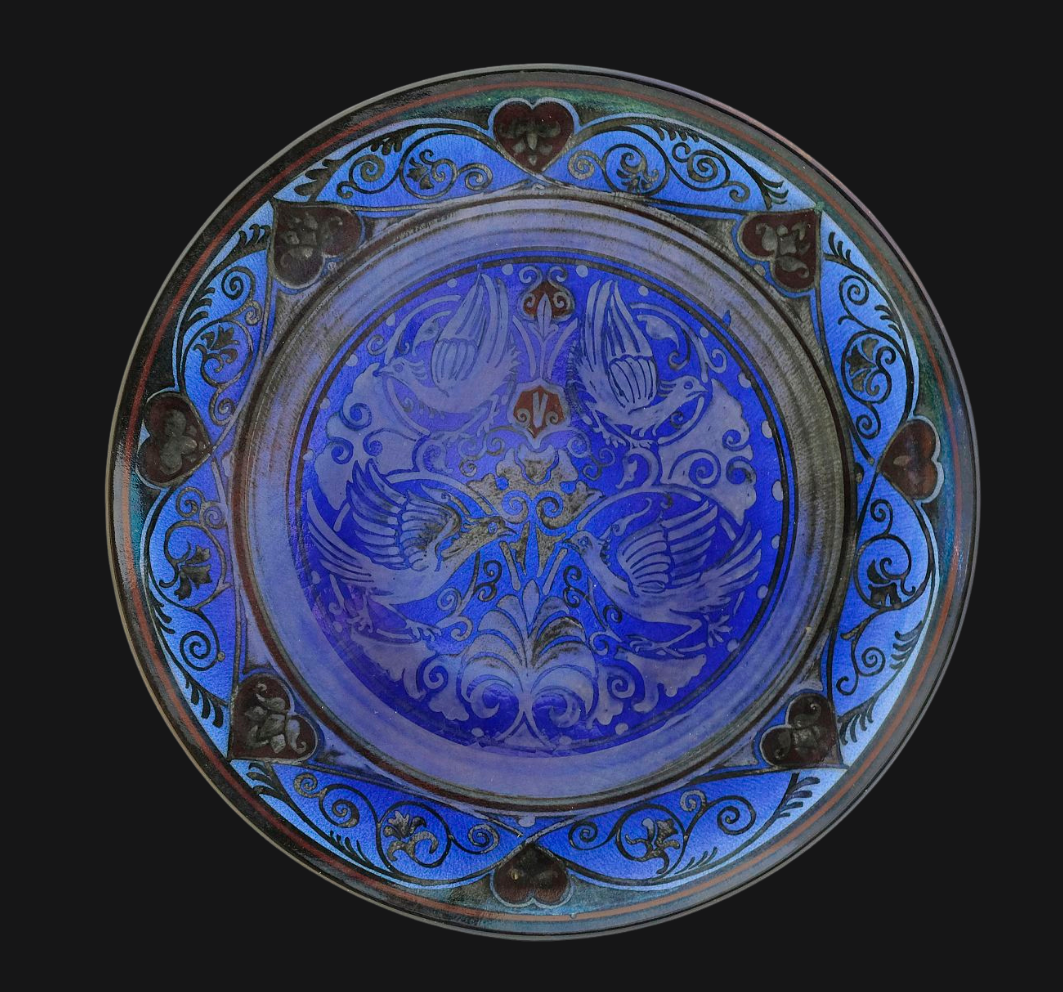Pilkingtons
Established in 1892 under the stewardship of William Burton who had previously worked as the chemist to Wedgwoods. Sited in Clifton Junction, North of Manchester, the factory was initially known for its tile output.
However in 1906, the same year as Gordon Forsyth joined the Company, they began their experiments with their lustre glazes and it is this work that has become the most prized of the factories output; this was a technically complex process using reduction lustre techniques and was overseen by the in house chemist Abraham Lomax.
Burton was a follower of the pioneers and the principles of the Arts and Crafts Movement and employed staff whose work would reflect the ethos and the aesthetics of the Movement. Commissions were appointed by some of the leading designers of the day such as Walter Crane and these were decorated by in house artists such as Charles Cundall who was later to become the official World War Two War Artist.
Pilkington’s was prized for its quality and artistic merit and was well received at the Franco British Exhibition of 1908, was retailed through Liberty & Co and after a visit from King George V in 1913 the factory was awarded the Royal Warrant.
Subscribe to the Pilkingtons Mailing list
Stock for sale
